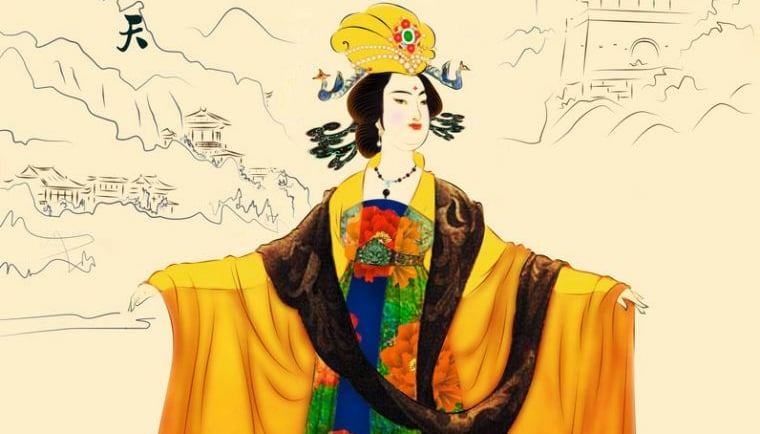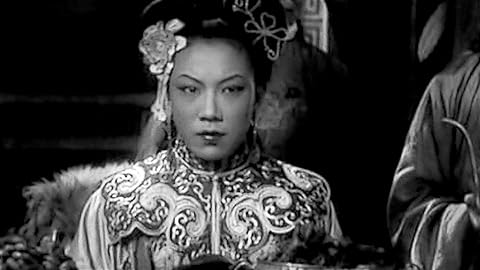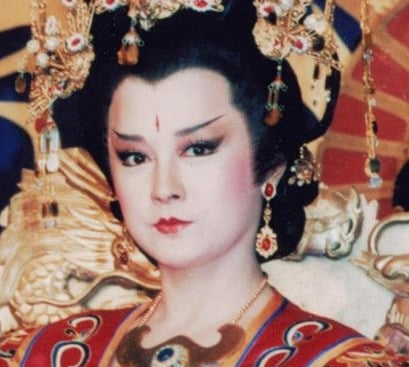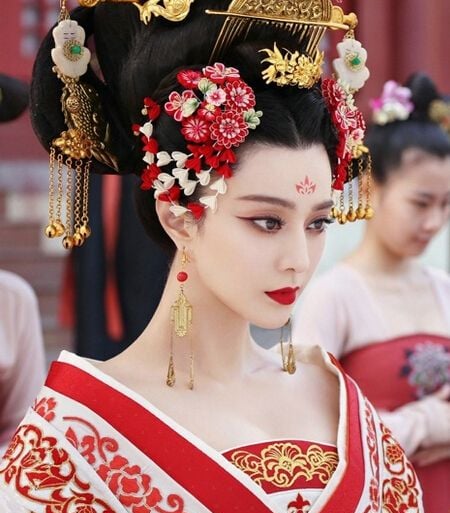Women in Power: Wu Zetian's Cinematic Portrayals & Societal Reflection
From 1939 to 2014, Wu Zetian's film portrayals reveal shifting attitudes towards women in power. Explore how these films reflect China's changing social landscapes and shape modern Asian female identity


The cinematic journey of Wu Zetian, as depicted in the films of 1939, 1985, and 2014, offers a unique lens through which we can observe the shifting societal attitudes toward women in power. These films not only serve as historical narratives but also as cultural commentaries that resonate with and potentially shape the identity of modern Asian women. The transformation of Wu Zetian's image from a cautionary tale to a symbol of female agency underscores a broader narrative about Asian women's capabilities and rights, allowing for a more nuanced understanding of their place in both history and contemporary society.


Violet Koo Lan-Chun
Firstly, released in 1939, "The Empress Wu Tse-Tien" (武则天: Wǔ Zétiān) is a Chinese historical feature film inspired by the life of Wu Zetian, the first and only female emperor in Chinese history. Directed by Fang Peilin and starring Violet Koo Lan-Chun, the film offers a glimpse into Wu Zetian's story within the context of China's Golden Age of cinema that reveals the early cinematic gaze. This era, marked by the production of socio-political “revolutionary films”, was sometimes referred to as the "leftist movement" due to the growing tension between the Kuomintang and Communist parties, which was reflected in the films' themes. Chinese cinema has a long history, and films of this period often explored the clash between modernity and tradition. Notably, "The Empress Wu Tse-Tien" presents a nuanced portrayal of Wu Zetian, reflecting the complex social realities of pre-World War II in China. The film's narrative structure follows Wu Zetian's journey in three parts: Beginning to be Emperor's Favorite, At the climax of influence, and lastly, Her late years. The first part, Beginning to be Emperor's Favorite, opens with Wu Zetian being selected to enter the palace as a concubine. She quickly receives love from Emperor Taizong, becoming one of the most powerful women. By portraying Wu Zetian, Koo Lan-Chun (Violet) expresses her authority with a sharp and envious eye toward the “fat” and indecisive emperor, who uses his “headache” as a reason to not give his responsibility in the government work. This facial expression and cunning manipulation skill allowed Koo Lan-Chun (Violet) to show Wu Zetian as an “unofficial” empress and a “misogynist” or evil woman. The second part, At the climax of Influence, focuses on the power tension between Wu Zetian and other concubines in the palace. Wu Zetian gradually eliminates those who might threaten her power, becoming the real power behind the throne. Lastly, the film chronicles Wu Zetian's life after she seizes power. She ruled the country for 15 years, leading the Tang Dynasty into a period of prosperity. The film ends with Wu Zetian's death in glory by being dethroned by Sung Jing and Jang Jienjie. In summary, the film depicts Wu Zetian as a powerful leader but also subtly questions her actions through the lens of Confucian morality. This reflects the social pressure on women's growing influence in China, navigating a balance between historical portrayal and artistic freedom. Hence, Wu Zetian emerges as both a smart strategist in the male-dominated court and a complex figure burdened by the weight of power in a patriarchal society.
Secondly, the TV series film The Empress of the Dynasty was released in 1985 as the first Taiwanese broadcast series, shortly after China’s Cultural Revolution. This series reflects a nation redefining its social order. Directed by Li Yueh-feng and produced by Lin Hui-chun, the series stars Angela Pan (Pan Ying Zi) as Wu Zetian (Chan). It portrays Wu Zetian as a socialist heroine, a revolutionary figure who dismantles feudalism. This idea also aligns with the 1980 “Maoist'' economic market, “sexualizing” Wu as a person and ideals of female leadership ( Song 373). The series also examines Wu Zetian from the perspective of Confucian “gender” by depicting Wu Zetian using her sexual appeal as an advantage to the benefit for her political authority at the beginning of the film (Song, 373). However, the series, The Empress of the Dynasty also aligns with the persistent cultural trope of the "Chinese snake analogy," a derogatory label exclusively applied to women, which seems to have become ingrained in the historical and social construction of Wu Zetian's image. According to many male-authored biographies during the 1980s, Wu Zetian is often portrayed in contrasting roles that include a “wicked demon” and an “ enlightened” emperor who deviates from patriarchal norms and a “beautiful and charming lover” with “a heart of snakes and scorpions”. This is evident in the title of the 2000 book, “Feng Liu Nu Huang WuZetian (The Dissolute Female Emperor Wu Zetian)”. Therefore, in the lens of a male, Wu Zetian’s imagery in 1980 distances her from humanity by being more different from men, in terms of expressing social authority. By watching this series, it does not entirely break from traditional historical portrayals. Li Yueh-feng and Lin Hui-chun explore Wu Zetian's relationships, they examine these elements through a Confucian lens, reflecting the enduring societal expectations for women during the 1980s. Furthermore, this series allows the audience to witness Wu Zetian's character development from a young woman to the pinnacle of power, potentially even glimpsing her influence on future generations. Moreover, this format also humanizes the legendary figure, providing insights into both her journey and her public persona as a ruler. Such a portrayal would likely resonate with viewers on multiple levels: their sense of national pride and history, the era's social and political openness, and ultimately, prompting reflection on the potential for women's leadership.


Angela Pan (Pan Ying Zi
Lastly, debuting in 2014, “The Empress of China” coincided with the rise of social media and the internet as powerful forces shaping contemporary audiences. The TV series “The Empress of China” (武媚娘传奇 -Wu Mei Niang Chuan Qi) starring Fan Bingbing as Wu Zetian, which directed by Gao Yi Jun that exclusively broadcast in mainland China, Taiwan, and Hong Kong, and Thailand. Set in the 7th and 8th centuries in China during the Tang Dynasty, the series chronicles the extraordinary rise of Wu Zetian, where the audience witnesses her transformation from a young concubine entering the palace at 14 to a formidable empress who navigates the treacherous court politics for decades, until her death at 82. Ultimately, she became the only female emperor in Chinese history. According to the Vietz News, with a budget over “300 million yuan (approximately 43 million USD)”, The Empress of China captivates audiences with its meticulous attention to several aspects, generating one the few Chinese dramas that extravagantly recreate the historical settings, with carefully selected design of costumes and actors. These elements contributed to the TV or drama series' success in terms of both visuals and narration. Despite that, this series shows Wu Zetian as a multifaceted leader: intelligent, politically astute, and strategic in her maneuvers, however, as an audience, Wu Zetian’s actions are not sensationalized as transgressive like previous film adaptations. Instead, her behavior and attitude are presented as calculated choices necessary for survival and success in a patriarchal world. This personal perspective is similarly pointed out in The Straits Times News, describing that this series seems like a modern “women's melodrama” and “idol drama” rather than a historical story. Particularly Wu Zetian (also known as Ruyi in this series) is depicted as a smart, “pure” and “cute heroine” at the beginning of the series when she enters the palace at the age of 14. So, “The Empress of China” offers a nuanced portrayal of Wu Zetian, highlighting her intelligence, complex motivations, and formidable leadership. The series strives to humanize the Empress, providing a detailed look at her rise to power and reign. Visually stunning, it captures the glory of the Tang Dynasty. This resonates with contemporary audiences raised in an era shaped by social media and a growing acceptance of women in leadership roles. It reflects the changing aspirations of Asian women who seek both professional success and personal fulfillment.


Fan Bing Bing